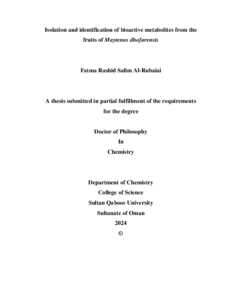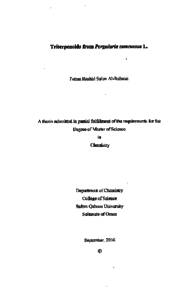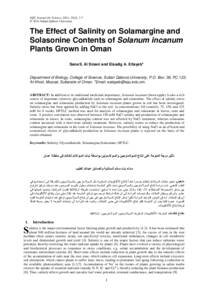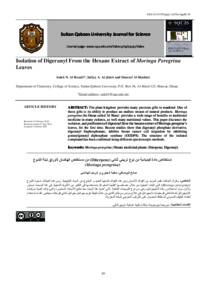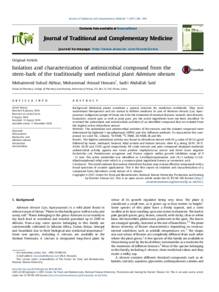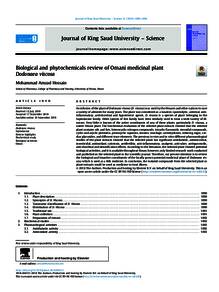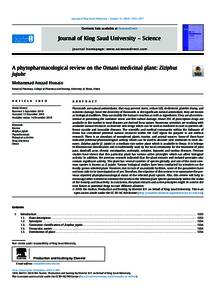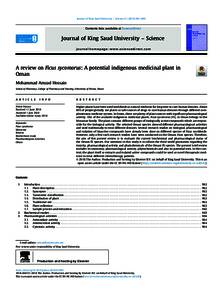وثيقة
Isolation and identification of bioactive metabolites from the fruits of Maytenus dhofarensis.
المصدر
Doctoral dissertation
عناوين أخرى
فصل وتحديد المركبات النشطة بيولوجيا من ثمار نبات Maytenus dhofarensis
الدولة
Oman
مكان النشر
Muscat
الناشر
Sultan Qaboos University
ميلادي
2024
اللغة
الأنجليزية
نوع الرسالة الجامعية
Doctoral dissertation
الملخص الإنجليزي
Maytenus dhofarensis is a Celastraceous herb naturally growing in the southern region of
Oman, locally known as "Serbit." Ethnobotanical information indicates that when goats
consume the plant's fruits, they experience illness marked by shivering attacks. Despite
not being recognized as a medicinal plant in Omani herbal culture, other Maytenus species
worldwide possess medicinal values. The absence of phytochemical studies on M.
dhofarensis prompted our interest in exploring this plant for structurally novel compounds
and their bioactivities against kinases related to cell survival and proliferation signaling
pathways.
In this study, hexane and chloroform extracts from the fruits of M. dhofarensis were
chemically investigated, leading to the isolation of seven compounds,
monoacetyldiglyceride (1), triacylglyceride (2), palmitic acid (3), hydroxylated
monoacetyldiglyceride (4), two dihydro-β-agarofuran-type sesquiterpene pyridine
alkaloids (5) and (6), and alkenyl isothiocyanate (7). Compounds (1–7) represent new
isolates from M. dhofarensis. The structures of these compounds were determined through
comprehensive IR, 1D and 2D NMR, UV, and ESI-MS analyses. The relative
configurations of compound 5 were deduced from density function theory (DFT)
calculations and NMR experiments. Additionally, hydroxylated fatty acid residues,
palmitic acid, stearic acid, and oleic acid (18:9) were identified in the seed oil of the plant
using GC-MS DMOX technique.
Compound 5 exhibits potential anti-cancer effects, inducing morphological changes and
a slight inhibition of colonies formation in MCF-7 cells. Molecular pathway analysis
reveals a significant impact on p-Akt expression in MCF-7 cells after treatment with
compound 5, suggesting a targeted mechanism.
قالب العنصر
الرسائل والأطروحات الجامعية

